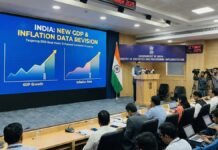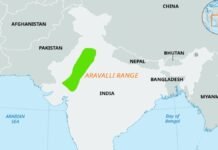
New Delhi: The India Meteorological Department (IMD) has projected the onset of the southwest monsoon over Kerala to occur around May 31, a date that aligns closely with the historical average arrival date of June 1. This forecast heralds the commencement of the critical four-month rainfall season, which is vital for the nation’s agrarian economy.
In a recent announcement, IMD Director General Mrutyunjay Mohapatra clarified that the expected arrival is not considered early but rather within the normal range, with a possible deviation of four days. The anticipation of the monsoon’s arrival is particularly significant for the agricultural sector, as the months of June and July mark the peak period for sowing kharif crops.
The IMD’s long-range forecast has been a beacon of hope, especially after predicting above-normal rainfall for the June-September season. This positive outlook is expected to extend across most of India, although certain regions, including parts of Jammu and Kashmir, the northeastern states, and Odisha, may experience less than average precipitation. Nonetheless, there is a 61% likelihood of the country receiving higher than normal rainfall during the monsoon season.
This optimistic forecast comes as a relief following the previous year’s subpar monsoon, which concluded at 94.4% of the long period average. The current year’s conditions appear more favorable, with moderate El Niño conditions in the equatorial Pacific Ocean anticipated to shift to neutral by the onset of the monsoon. Furthermore, the possibility of transitioning to La Niña conditions during the latter half of the monsoon season, around August-September, enhances the prospects for abundant rainfall.
The El Niño Southern Oscillation (ENSO), a cyclical climatic event, exerts a significant influence on the monsoon. While the El Niño phase is typically associated with reduced rainfall, its counterpart, La Niña, is known to bring about above-normal precipitation. Historical data indicates that out of 22 La Niña years since 1951, the majority have resulted in above-average monsoon rains, with the exceptions of 1974 and 2000.

Adding to the favorable indicators is the expected positive phase of the Indian Ocean Dipole (IOD), another climatic phenomenon that bodes well for the monsoon. Complementing this is the observation of reduced snow cover over the Northern Hemisphere from December to January, which is also considered a positive sign for monsoon activity in India.
As the nation prepares for the monsoon season, the convergence of these factors neutral to La Niña conditions, a positive IOD phase, and lesser snow cover paints a promising picture for India’s agriculture and water resources in the upcoming months.


















































